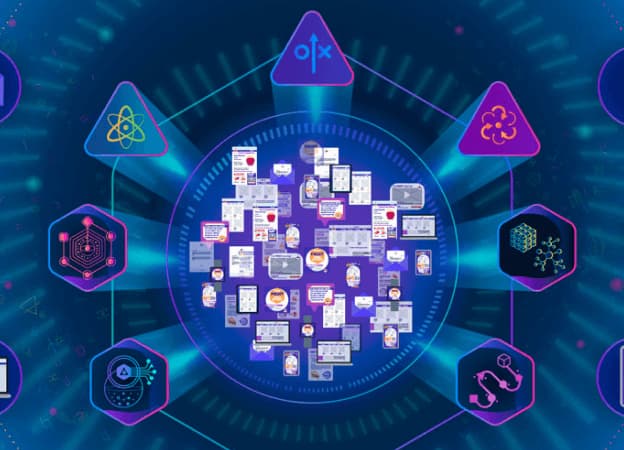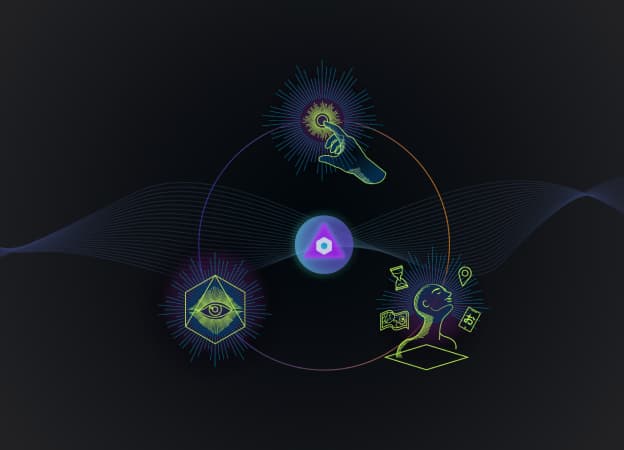What are the best practices for managing the ever increasing volume of content being created?
As content volume and velocity increases, so must structure. Everyone who works with knowledge, and especially every content and customer experience leader, are confronting three truths:- Knowledge work does not happen in a vacuum - content combines diverse interdependent inputs
- Unstructured knowledge leads to uncontrolled outcomes - content structure contains chaos
- Knowledge needs operations to function - content craves intentionality
A 5-step ladder towards successful controlled content
The steps to successful content management aren't particularly hard, but they do require time, effort, and investment. Just like we need to change our personal behavior and patterns to adjust to new situations, we also need to adjust our knowledge work.[A]’s strategy encompasses the following five steps:
1. Build a team focused on improving how knowledge work happens
We can't sustain shipping huge volumes of content with an ad hoc process, freshly stretched into new shapes, without managing how it's done.At [A] we help organizations build Content Services Organizations to manage this process. The CSO is the primary internal organization responsible for implementation and maintaining the ongoing rhythms of Content Intelligence. IT brings together and leverages the practices of COntent Strategy, Content Engineering, and COntent Operations.
By having a chartered group with the objective to smooth the process of content from idea to omnichannel delivery, we can make progress in improving all the points of the content supply chain.
As content systems grow and deliver more value, return on assets, time savings, and speed to market, organizations readily invest more and expand the CSO’s capabilities.
If your team is looking to become focused on improving how knowledge and content work within your organization, reach out for a conversation. [A] meets clients where-ever they are in their journey, helps augment teams , design and charter a roadmap, and work with clients to achieve the new age of intelligent systems and processes. Work smarter with [A].
2. Analyze how existing content supply chains function day-to-day
Have the team build a map of how content gets done, with all of the stages and states. Companies are still struggling with the move from a page-centric ecosystem to an intelligent modular content ecosystem, with omnichannel content molecules. As a result, we are facing massive technical debt in the form of misconfigured and out-of-date content systems, and massive content debt in the form of unstructured, duplicated, metadata-starved content sets.
Mapping and understanding the territory of how content flows through an organization and out to consumers is key. For help analyzing your content supply chain, connect with [A] today.
3. Build content structural and semantic models to standardize how content moves from place to place
Content Models are the foundations of successful content. They are the basis of how intelligent content is created, deployed, viewed, and consumed.Nothing connects without internal standards about content structure (think content models) and semantics (think tags, terms, taxonomy).
Structure shapes content with an object-oriented approach:
- Content is organized as reusable content objects, rather than hardcoded, unstructured blobs
- Objects have containers, which can be manipulated, transformed, annotated, reused, and managed from a central location: they can be pointed to from anywhere
Content semantics is the contextualization of content structures:
- Content semantics define the entities, associations, and relationships for a given piece of content within the metadata
- Semantics is how machines can understand content connections and relationships
Siloed departments, mid-sized businesses, nonprofits, anyone that cares about content should consider instituting a Content Orchestration Model and the essential CSO functions.
4. Organize acquisition, management, and delivery of content along those standards
All teams need a process, and all processes need standards. With these, content can flow from place to place regardless of department, geography, office or home office, even across platforms.At [A], experience leads us to strongly believe that the creation of new practices around the knowledge itself is what will make this new era of knowledge asset reuse practical. The disciplines of structured content, and the engineering of content, combined with the development of standards, shared semantics, and the building of new operating approaches to content, underpin the ability of an organization to embrace the new world with intelligence.
5. Operationalize content and manage it like any other complex supply chain
Imagine the massive amount of air travel happening safely and successfully without the invisible team work of air traffic control. In a similar fashion, Content Operations provides cover for each initiative and content project. It monitors adherence, and helps the content supply chain flow. Content Operations also uses standards to improve quality and support and extend strategy.Content is no longer static: it has to do so much more, in so many places, for so many different kinds of audiences. And, content has grown exponentially over recent years due to the proliferation of platforms and consumers. Fortunately, Content Operations empowers various teams to communicate and collaborate with ease.
With Content Operations, shared workflows, integrated tools, and standard procedures come together to help content creation go a much further distance with the same resources at play. The goal is to increase flow and throughput while decreasing friction throughout the content supply chain.
Having an Operations function chartered to improve the workflow results in: faster content creation and management, better standards adherence, fewer breakdowns, faster fixes, more communication, and higher quality.
Moving towards a solution
These steps aren’t particularly hard. But they do require time, effort, and investment. Just like we’re needing to change our personal behavior and patterns to adjust to the new world, we also need to adjust our knowledge work. We need to start by understanding the roots of the chaos.Our knowledge assets need to live their full life. They light up all our customer experiences. Content drives the whole distributed ecosystem of any organization.
Now is the perfect time. Let's organize teams to understand and manage the content supply chain as a function.



